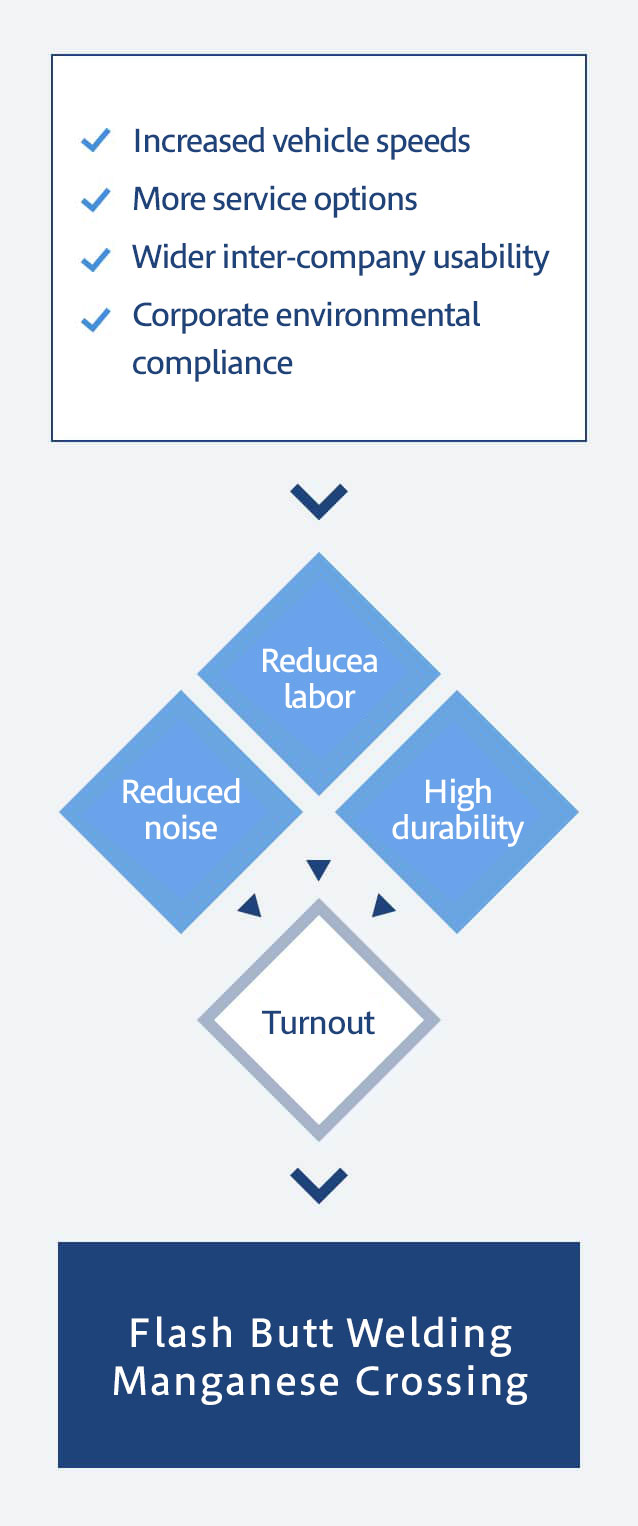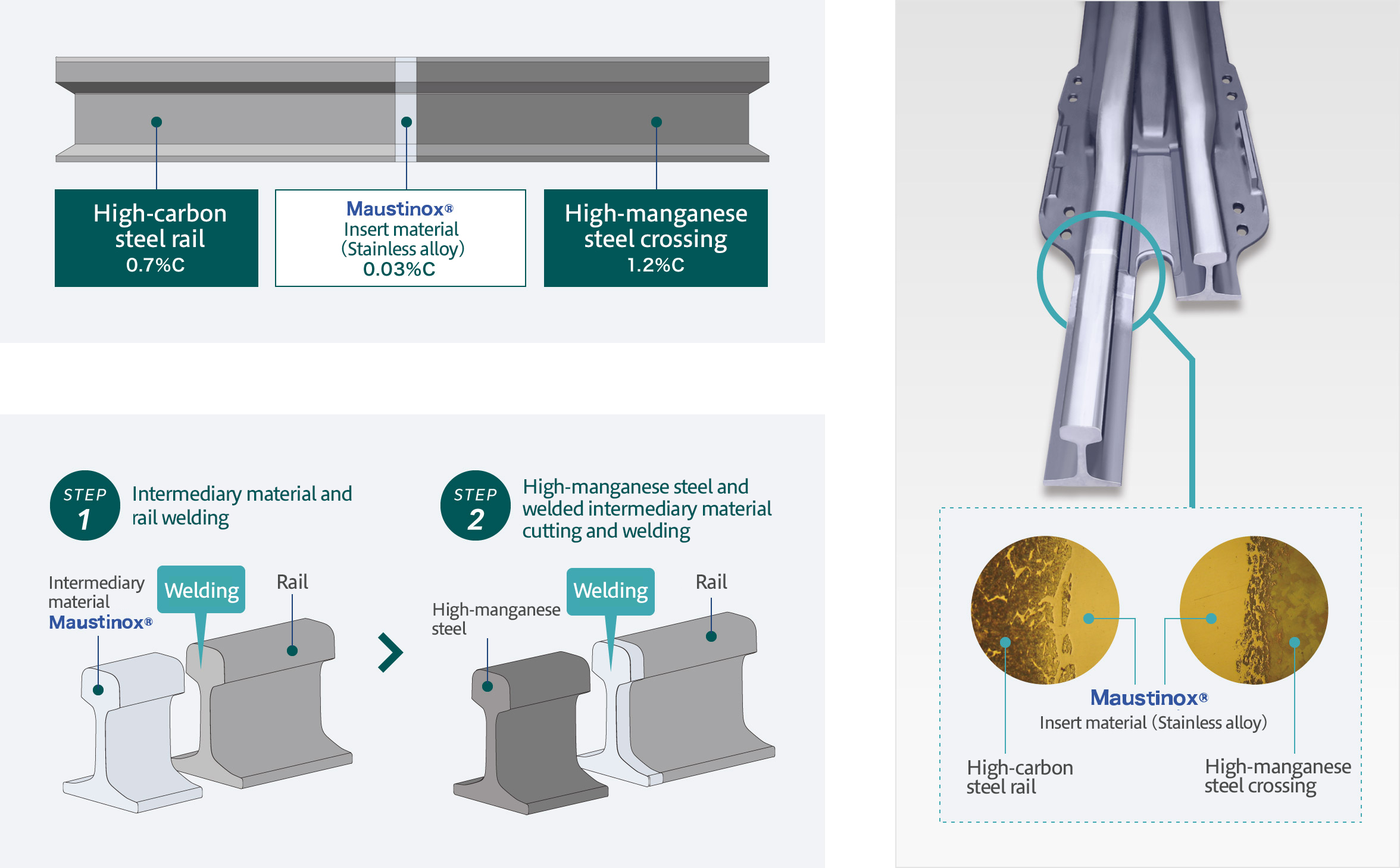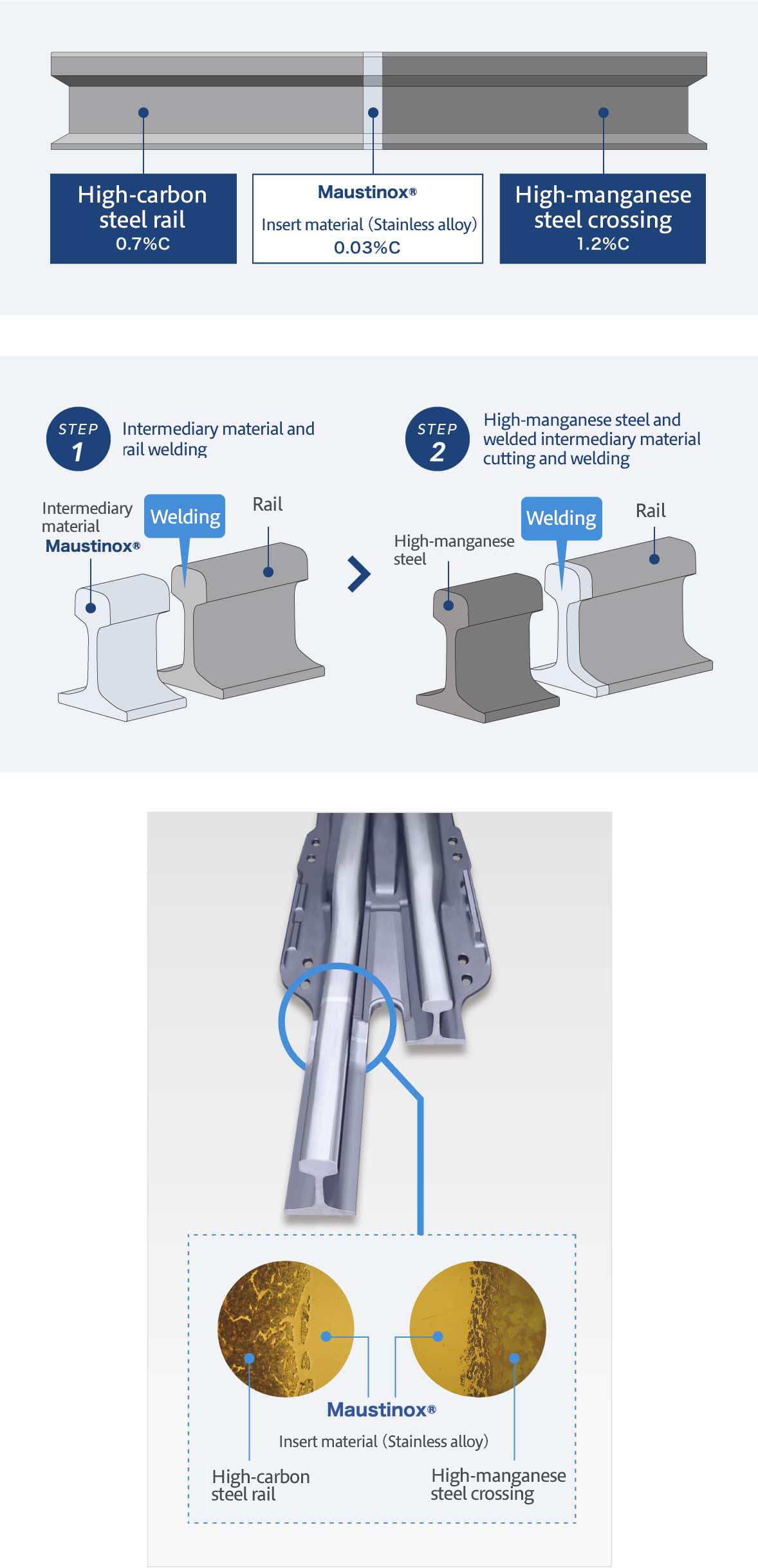Yamanaka Group
Business Fields
Flash Butt Welding
Manganese Crossing
Increasing the speed of railways, reducing the maintenance work for turnouts, and lessening the noise output.
To realize these benefits, we have started to use welding technology for manganese crossings and rails.
Benefits of Flash Butt Welding Manganese Crossing
- Enables the welding of rails and manganese crossing joints, which can substantially lessen noise output and vibrations.
- Eliminates joint impact to make riding the train more comfortable, limit the deterioration of railroad ties, and provide other benefits that will save time and effort on maintenance work.
- Removes dents in the welded joints, and by setting a 2-level slope aligned with the train wheels at the section where the carriages change over, the process can go more smoothly.
Highly Reliable and Durable Welding
- Flash butt welding is a high-quality and computer-controlled welding technique.
- This is a 2-step welding method that uses intermediary material (Maustinox®) placed in between the crossing and rail during the welding.
- This welding method and intermediary material have been developed by the French company Outreau Technologies.
- The welding is done by workers who have acquired flash butt welding qualifications from Outreau Technologies and the East Japan Railway Company.
Achievements in Japan and Overseas
- Kanto Bunkiki crossings laid on the main lines for the East Japan Railway Company since December 2011.
- Kanto Bunkiki crossings also laid on lines for other railway companies.
- Over 36,000 Kanto Bunkiki crossings welded in Europe (as of the end of 2016). (French company Outreau Technologies).
- TOP
- Business Fields
- Flash Butt Welding Manganese Crossing





